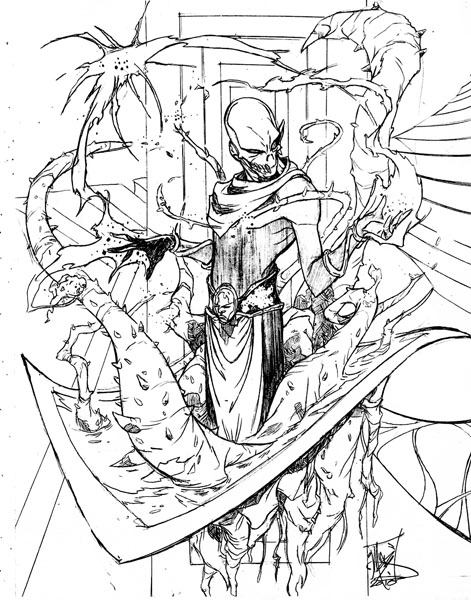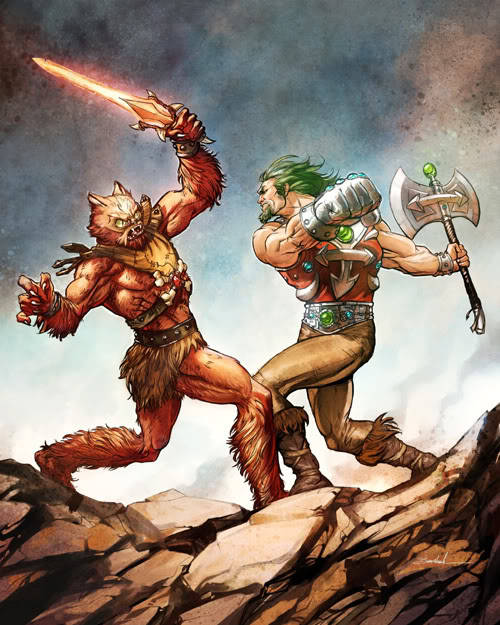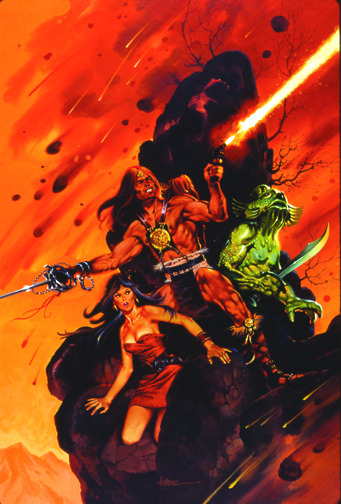Guardians of the Galaxy is probably not a great film as science fiction. I don't mean in the "so implausible!" sort of nonsense, I mean that it doesn't evoke the feel of another world in the way that almost anything in the
Star Wars series does. Maybe that's unfair--
Star Wars is really good at that, after all--but I would say
GotG is less good at that then
Serenity or
Chronicles of Riddick, as well. It's most sense of wonder inducing location is Knowhere, and it doesn't really do as much as it might with a place that is a
giant alien head that people are living in and mining! (I shoud point out that
Farscape did something similar back in "Home on the Remains" in 2000).
Also, it probably falls short as an epic. It's villains are sort of perfunctory and at times a bit silly. Maybe it's seeing Lee Pace on
Halt and Catch Fire too much these days and knowing Karen Gillan only from
Dr. Who, but they seemed almost laughably over the top in early scenes. The makeup designs were good, but it felt like Gunn might be directing them to try to out "drama!" Shatner and Montalban in
Wrath of Khan. If either had had a mustache they would have no doubt twisted it. I will say this attenuated a bit as things went on, so either they got more comfortable in the roles, or it was just me.
All that said: I think it's a good movie. It's a
fun movie. It has great pacing. It's main characters (while simple in characterization) are all given both good comedy and dramatic moments. While I didn't find it as funny as some, I will say their are really very few groaner lines for this sort of thing.
Most of all, I think it's a great blueprint for a space opera-ish rpg campaign. The characters all have their own roles and the group has their own ship. They are initially mistrustful, but they find reasons to team up. Action takes preference over world-building, but there is just enough of the latter to intrigue players. The climatic battle is big, but structured in such a way to give the PCs central rolls. The ending sets things up perfectly for more adventures.
So yeah, go see it, despite my nitpicks.
Also: Maybe it's just me, but it bears a strong resemblance to
Farscape. A disparate band escapes prison, We've got a pop culture referencing, sometimes buffoonish, hero from earth, a badass warrior woman betraying her people who has sexual tension with the hero, a sonorous-voiced warrior mourning his wife and child, a diminutive and amoral nonhuman, and a tender-hearted plant being. Weird, huh?






.jpg)













.jpg)

































